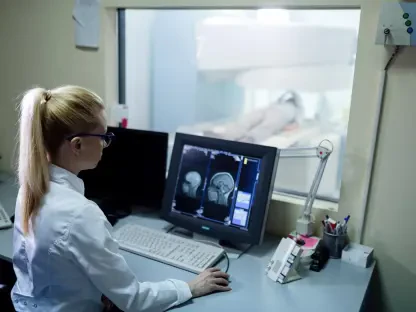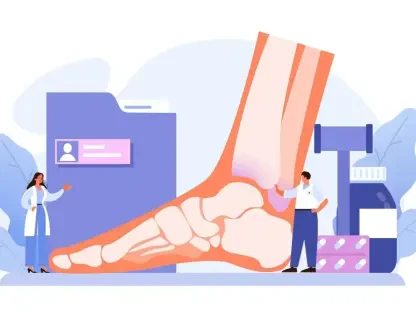The COVID-19 pandemic was a wake-up call for global healthcare systems, highlighting the critical need for technological preparedness. Informatics, along with Artificial Intelligence (AI) and Machine Learning (ML), proved to be instrumental in managing the pandemic efficiently. Central to this preparedness is health informatics, which serves as the backbone for a more responsive and interconnected healthcare system. By leveraging these advanced technologies, healthcare organizations can not only enhance their current capabilities but also better prepare for future health crises. The integration of AI and ML within informatics frameworks offers the potential for more accurate epidemic forecasting, improved resource distribution, and enhanced patient care.
The pandemic underscored the importance of having robust data management systems in place. Effective health informatics ensures that comprehensive data sets are available, enabling better disease tracking and informed decision-making. AI and ML algorithms can analyze these vast amounts of data to identify patterns and predict future outbreaks. This capability is crucial for timely responses and effective containment measures. Furthermore, the implementation of secure programs for telemedicine offers continuity in patient care, even during challenging times, proving the indispensable role of technological advancements in modern healthcare.
The Role of Healthcare Informatics
Healthcare informatics involves the comprehensive analysis and management of health and clinical data to enhance patient care. It interconnects hospitals, insurance providers, doctors, and the government, facilitating better disease tracking and resource management. The pandemic showcased how informatics enabled hospitals and pharmacies to anticipate supply demands and manage resources like ventilators and PPE effectively. These systems provided critical insights into inventory levels and usage patterns, allowing for more precise allocation of resources and reducing instances of shortages or surpluses. Informatics also supported the rapid dissemination of treatment protocols and information about emerging virus variants, ensuring that healthcare providers had the most current data at their disposal.
Furthermore, informatics supports telemedicine by developing secure programs for remote patient care, which became crucial during the COVID-19 crisis. The rise of telehealth platforms allowed patients to receive medical attention without the risk of exposure to the virus, alleviating the burden on physical healthcare facilities. The integration of AI and ML into informatics empowers healthcare providers to make informed decisions based on accurate predictions and sophisticated analyses. AI-powered tools can assist in diagnosing conditions, recommending treatment plans, and even predicting patient outcomes, thus enhancing the overall quality of care and operational efficiency.
Impact of Informatics During the COVID-19 Pandemic
Informatics played a pivotal role in the healthcare community’s response to COVID-19. By connecting various entities and enabling data sharing, it helped monitor virus variants and track symptoms at multiple levels. This interconnectedness allowed for a comprehensive view of the pandemic’s progression, facilitating coordinated efforts to mitigate its spread. Healthcare informatics also enabled better epidemiological modeling, which informed public health strategies and interventions. Resource management became more efficient, as informatics provided insights into supply and demand, allowing for the redistribution of critical equipment and supplies.
Public health communication was enhanced through informatics, with information portals offering daily updates on case numbers, testing rates, and vaccine rollouts. Such transparency and accessibility of data were vital in the collective fight against the virus. Real-time data updates allowed authorities to make evidence-based decisions and adapt strategies quickly as the situation evolved. Additionally, informatics facilitated the tracking of vaccination progress and the identification of areas with low vaccine uptake, guiding targeted outreach and education efforts. This flow of information was critical in maintaining public trust and encouraging compliance with health measures.
Power of Machine Learning and Artificial Intelligence
AI and ML emerged as powerful tools for data processing and predictive analytics during the pandemic. Their ability to analyze raw data and generate meaningful predictions proved invaluable. An example is the MIT engineers’ use of ML to predict infection rates based on quarantine protocols. These advanced models incorporated various parameters, such as mobility data and social distancing compliance, to offer accurate forecasts that informed public policy decisions. Moreover, AI models were developed to identify asymptomatic COVID-19 patients with high accuracy through forced-cough recordings, showcasing innovative applications of technology in health diagnostics.
These technologies can also optimize resource distribution, ensuring that healthcare facilities are adequately equipped to handle surges in patient numbers. By predicting disease trends and identifying new diagnostic methods, AI and ML significantly enhance pandemic response strategies. For instance, predictive models can estimate the demand for ICU beds and essential supplies, enabling proactive measures to prevent shortages. Additionally, AI-driven diagnostic tools can assist in early detection of infections, allowing for prompt treatment and isolation measures to reduce transmission. The integration of AI and ML into healthcare operations not only enhances efficiency but also improves patient outcomes through timely and precise interventions.
Preparing for the Next Pandemic
The urgency of preparing for future pandemics by leveraging the potential of health informatics, AI, and ML cannot be overstated. Effective pandemic response hinges on quick decision-making supported by accurate data analysis. Informatics facilitates this by streamlining data management and promoting efficient communication among healthcare providers, public health officials, and policymakers. This interconnected approach ensures that all stakeholders have access to real-time information, enabling coordinated and informed actions. However, regulatory hurdles must be addressed for a more cohesive response. Harmonizing state and federal protocols can enhance the efficacy of informatics in healthcare.
Additionally, investment in AI and ML is crucial. By fostering collaborations between technical experts and healthcare professionals, organizations can harness these technologies’ full potential. Continuous research and development in AI and ML are essential for creating more sophisticated tools that can predict and manage health crises effectively. Proactive investment in these areas will enable healthcare systems to move from a reactive stance to a more predictive and preventive one, ultimately improving resilience against future pandemics. Establishing frameworks for data sharing and privacy, and ensuring that these technologies are ethically deployed, will also be critical in maximizing their benefits while maintaining public trust.
Regulatory Challenges and Modernization
A significant challenge in maximizing the potential of informatics in healthcare lies in regulatory variances between state and federal levels. Discrepancies in regulations can hinder data sharing and communication among healthcare organizations, complicating coordinated efforts during a pandemic. One notable legal framework, the Health Insurance Portability and Accountability Act (HIPAA), while essential for privacy, often presents barriers to the efficient use of informatics. Modernizing these regulations to facilitate better communication could greatly enhance the overall efficacy of pandemic response strategies.
Streamlined regulations would support better data sharing and communication among different entities, ensuring a more coordinated response to health crises. Addressing these regulatory discrepancies is essential for maximizing the potential of informatics in healthcare. For example, developing a unified national health data exchange framework could enable seamless information flow across states, providing a more comprehensive understanding of pandemic dynamics. Furthermore, aligning international regulatory standards could facilitate global collaboration, vital for tackling pandemics that know no borders. These changes require concerted efforts from lawmakers, healthcare leaders, and technology experts to create a regulatory environment that supports innovation while safeguarding privacy and security.
Proactive Investment in Technology
The COVID-19 pandemic served as a critical reminder for global healthcare systems to enhance their technological readiness. The role of informatics, combined with Artificial Intelligence (AI) and Machine Learning (ML), was pivotal in managing the crisis effectively. Health informatics stands at the core of a more responsive and interconnected healthcare system, allowing organizations to improve current operations and prepare for future health emergencies. By integrating AI and ML within informatics frameworks, healthcare systems can achieve more accurate epidemic forecasting, better resource allocation, and enhanced patient care.
The pandemic highlighted the necessity for robust data management systems. Effective health informatics ensures the availability of comprehensive data sets, which are vital for efficient disease tracking and informed decision-making. AI and ML algorithms can sift through vast amounts of data to detect patterns and predict future outbreaks, enabling timely responses and effective containment strategies. Additionally, secure telemedicine programs maintain continuity in patient care, even during crises, underscoring the critical role of technological advancements in modern healthcare.









